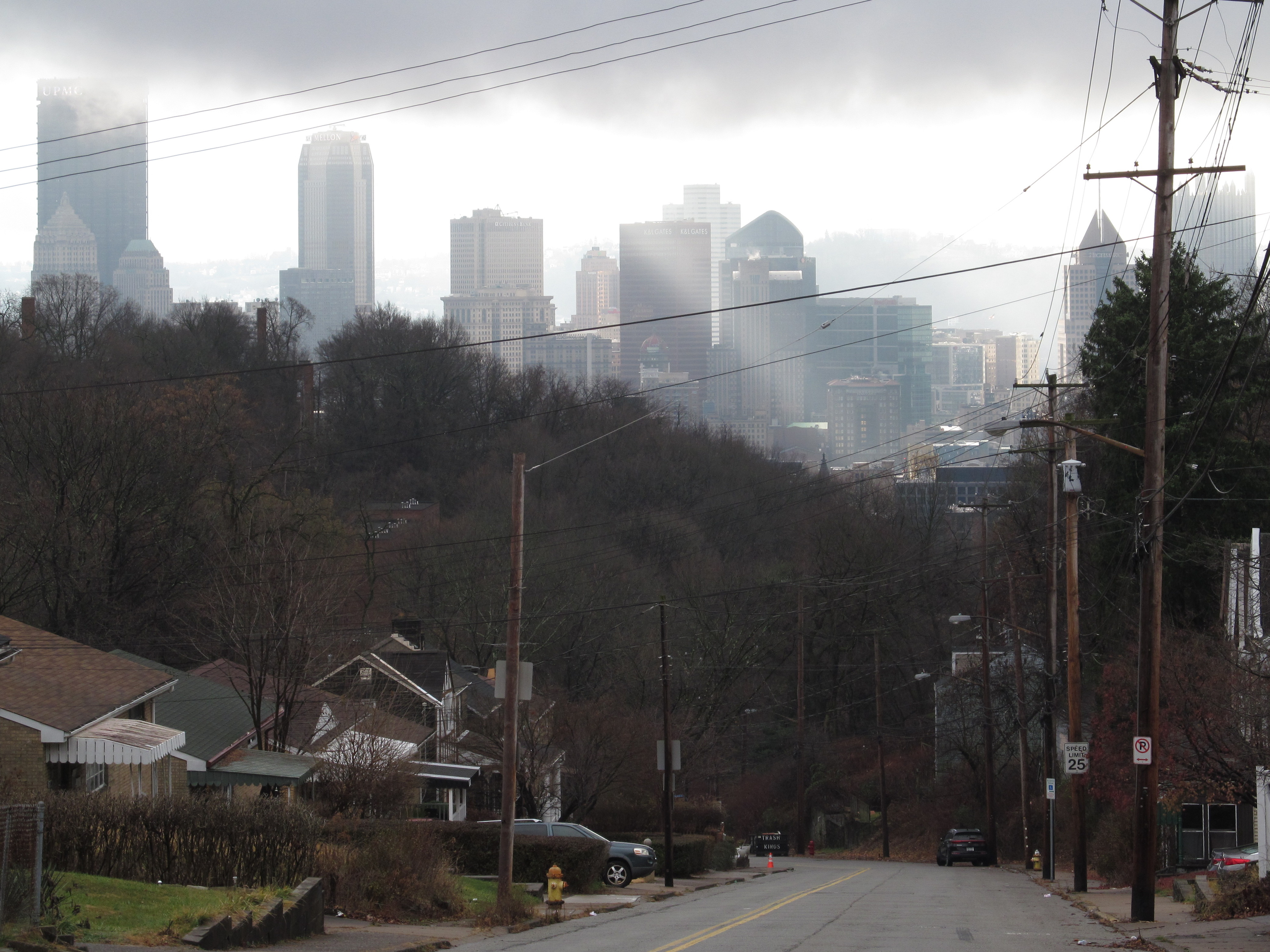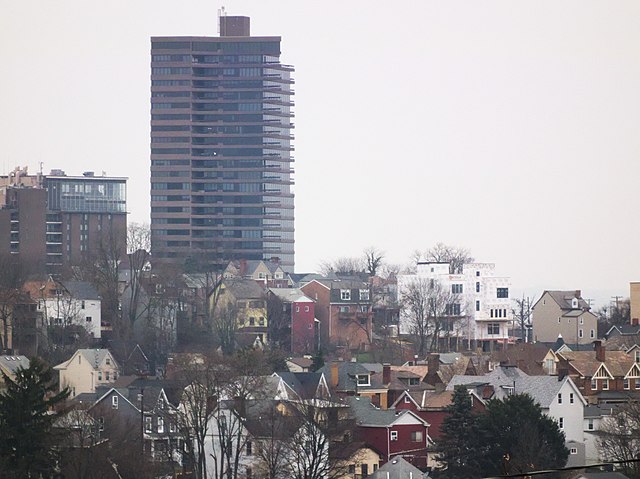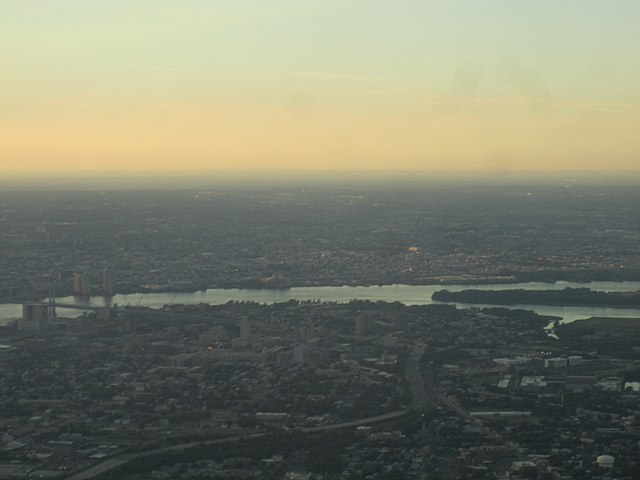PennFuture Blog
Our Perspectives on the Latest Issues
A new report ranks Pennsylvania cities among the worst in the nation for particle pollution, with at least one Pennsylvania metropolitan area making the lists of the 25 most polluted cities for short-term and annual particle pollution. The lists are otherwise largely dominated by cities in western states that are impacted from particle pollution caused by devastating wildfires, highlighting the magnitude of the damaging industrial pollution experienced by Pennsylvanians.
On April 19, 2023, the American Lung Association released its 24th annual “State of the Air” report, which grades Americans’ exposure to unhealthy levels of ozone air pollution, and both annual and short-term spikes in fine particulate pollution over the three-year period of 2019 to 2021. The “State of the Air” report evaluates daily and annual measures of particle pollution and daily measures of ozone, two of the most dangerous and widespread pollutants. The report uses air quality data to calculate values reflecting the air pollution problem which it uses to rank metropolitan areas and assign grades to counties, allowing the public to easily compare air pollution exposure between communities and to track air quality changes over time.
Pennsylvania Cities Among Worst for Particle Pollution in Eastern U.S.
 The report showed that the cities most impacted by high levels of particle pollution were those cities in the western U.S. where they are affected by wildfires. Because western wildfires are a major contributing factor for the increasing unhealthy levels of particulate pollution, it is not surprising that all but two of the 25 worst metro areas for short-term particle pollution are in western states. Pennsylvania has the unfortunate distinction of being home to the only two eastern cities to make that top 25 list, Pittsburgh and Lancaster, ranked 20th and 24th respectively. Both of which posted more days in high fine particle pollution in this years’ report. Pittsburgh’s short-term particle pollution was ranked the worst in the nation east of Denver, Colorado.
The report showed that the cities most impacted by high levels of particle pollution were those cities in the western U.S. where they are affected by wildfires. Because western wildfires are a major contributing factor for the increasing unhealthy levels of particulate pollution, it is not surprising that all but two of the 25 worst metro areas for short-term particle pollution are in western states. Pennsylvania has the unfortunate distinction of being home to the only two eastern cities to make that top 25 list, Pittsburgh and Lancaster, ranked 20th and 24th respectively. Both of which posted more days in high fine particle pollution in this years’ report. Pittsburgh’s short-term particle pollution was ranked the worst in the nation east of Denver, Colorado.
While the worst 25 cities for annual particle pollution were somewhat more geographically dispersed than the short-term particle pollution list, cities most affected by western droughts and wildfires still accounted for much of the list. Pittsburgh ranked 14th worst for annual particle pollution overall and ranked the third worst among those cities located east of Phoenix, with only Indianapolis and Detroit ranking higher. Ranking on the list of cities with the worst particle pollution in the country, without the direct impacts of wildfires, demonstrates just how much Pennsylvania communities are being damaged by air pollution from industrial sources.
Pittsburgh Metro Area Particle Pollution Worsening, Among Worst in U.S., and Ozone Pollution Improves
 The 12-county Pittsburgh-New Castle-Weirton, PA-OH-WV metro area continued to rank among the worst polluted cities in the country for both annual and 24-hour particle pollution. The Pittsburgh metro area experienced more short-term spikes in particle pollution in comparison with last year’s report. This means that residents of the Pittsburgh metro area experienced an average of more unhealthy days during the three years covered by this year’s report than in the time period of last year’s report, with an annual weighted average of 8.2 high particle days in the 2023 report in comparison with 7.7 days in the 2022 report. There was also a small increase in the annual particulate matter pollution in the Pittsburgh area.
The 12-county Pittsburgh-New Castle-Weirton, PA-OH-WV metro area continued to rank among the worst polluted cities in the country for both annual and 24-hour particle pollution. The Pittsburgh metro area experienced more short-term spikes in particle pollution in comparison with last year’s report. This means that residents of the Pittsburgh metro area experienced an average of more unhealthy days during the three years covered by this year’s report than in the time period of last year’s report, with an annual weighted average of 8.2 high particle days in the 2023 report in comparison with 7.7 days in the 2022 report. There was also a small increase in the annual particulate matter pollution in the Pittsburgh area.
As a result, the Pittsburgh metro area rose two slots to 20th on the list of cities with the worst short-term particle pollution out of 223 metro areas, up from 22nd place last year. It maintained last year’s ranking of 14th worst city for annual particle pollution out of 200 metro areas. The worsening particle pollution in the Pittsburgh area is a troubling trend that shows much more needs to be done to curb harmful air pollution from industrial sources.
The Pittsburgh metro area did show improvement in the number of high ozone days, with its rank improving to 54th most polluted in the country out of 227 metro areas, down from 46th in the last report. Allegheny County also received its first passing grade for ozone, however it still experienced an annual weighted average of 2.0 unhealthy air days for ozone smog, earning it a C grade.
Philadelphia Area Air Shows Improvement, Maintains Failing Grade for Ozone
 The 16-county Philadelphia-Reading-Camden, PA-NJ-DE-MD metro area experienced less unhealthy air days of high ozone, but with a ranking this year of 28th it still only managed to narrowly avoid inclusion in the list of the country’s top 25 worst cities for ozone pollution. Both Philadelphia and Bucks counties still received failing grades for ozone, experiencing an annual weighted average of 6.5 and 5.7 unhealthy ozone days respectively.
The 16-county Philadelphia-Reading-Camden, PA-NJ-DE-MD metro area experienced less unhealthy air days of high ozone, but with a ranking this year of 28th it still only managed to narrowly avoid inclusion in the list of the country’s top 25 worst cities for ozone pollution. Both Philadelphia and Bucks counties still received failing grades for ozone, experiencing an annual weighted average of 6.5 and 5.7 unhealthy ozone days respectively.
The Philadelphia area’s short-term particle pollution stayed the same from last year’s report, with Delaware County still receiving a D grade with an unchanged number of unhealthy days of particle pollution. The Philadelphia area’s national rank did improve to 55th worst city for short-term particle pollution, up from 48th in last year’s report.
In welcome news, the report found that the Philadelphia area experienced lower year-round particle pollution levels than in last year’s report. The Philadelphia area dropped off the list of the 25 most polluted cities for annual particle pollution. The area was tied for 18th most polluted in last year’s report, and this year leapt down to 46th most polluted for year-round particle pollution.
Many Pennsylvania Counties Receive Failing or Poor Grades for High Ozone Days and Short-Term Particle Pollution
The report paints a worrying overall picture of Pennsylvania’s air quality. Based on the air quality data available, the report was able to assign grades for 40 out of the 67 counties in Pennsylvania for at least one measure of air quality. Bucks and Philadelphia counties both received a failing grade for high ozone days, with six other Pennsylvania counties receiving a C grade for high ozone days (Allegheny, Armstrong, Berks, Delaware, Montgomery, and Northampton). For short-term particle pollution, Allegheny and Lancaster counties each received a failing grade. Berks, Cumberland, Dauphin, and Delaware counties received a D grade for short-term particle pollution, and six other Pennsylvania counties received a C grade (Beaver, Chester, Lebanon, Lehigh, Northampton, and Philadelphia). Overall, 15 counties in Pennsylvania received a C grade or lower for at least one pollutant measure.
The 2023 “State of the Air” shows that Pennsylvanians continue to be exposed to harmful levels of air pollution, and much more work needs to be done to fight air pollution from industrial sources and to ensure communities across Pennsylvania can breathe clean air.
PennFuture is dedicated to protecting and improving air quality for all of Pennsylvania. If you are interested in supporting our work, please become a member today!
BLOG SEARCH
LATEST BLOG POSTS
TAG CLOUD
Get the Latest onOur PennFuture
Sign up for email updates on the latest news, events, and opportunities to make a difference.